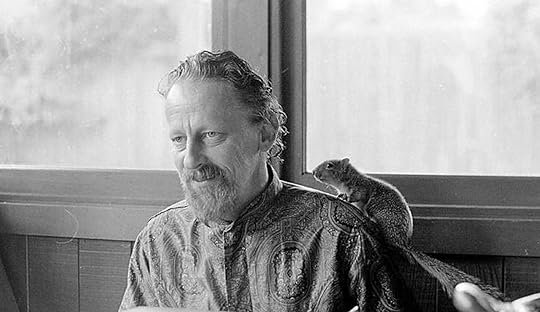More Than Human by Theodore Sturgeon (1953)
1953 first edition cover by Richard Powers
While trying to decipher the plot and feel of this book it became clear how fully ‘Sturgeon-esque’ it really is, a creation from the mind of a wholly unique writing talent. A challenging, twisted and mysterious story brings to mind questions of belonging and morality in addition to great cover art from around the world. This is sci-fi artistry because it’s fantastical, ominous and hints at the questions: Could something like this happen? Has it already? Dive deep into Sturgeon infested literary waters….
1954 Italian cover by Curt Caeser
1970 German cover by Atelier Heinrichs & Bachmann
This 3-part bizarro journey explores the next phase of human evolution by way of a gestalt (an organized whole that is perceived as more than the sum of its parts). A small group of human beings with various parapsychological abilities come together and make a human gestalt or new species of homo gestalt, whereby they learn to work together utilizing their personal gifts to function as a whole.
1970 cover by Robert Pepper
Part 1 ‘The Fabulous Idiot’
Part one is about Lone (Alone), a bit of a simpleton who recognizes that he has telepathic powers, but has never experienced any real human connection. He is taken in by a farming couple who recognize that something is obviously not right about him but accepts him anyway. As Lone matures he feels he may be a burden to the couple and retreats into the woods to live in isolation. Mysteriously he is joined in the woods by an 8 year girl, Janie, who has the power of telekinesis along with twin, African American, mute sisters, Bonnie and Beanie, who possess the power of teleportation (losing their clothes each time by the way). On a side note, Sturgeon’s depiction of the the twins teleporting may have planted the seed for a strikingly familiar character that would appear 20 years later, X-Men’s Nightcrawler. The farming couple give birth to a bizarre mongoloid baby who doesn’t seem to age so Lone adopts the child, wiping the couple’s memory of ever having it. The baby has an unbelievable mental capacity, but never speaks, thinking like a computer and even helping Lone build and anti-gravity generator. Janie is the only one who can communicate with the baby, relating questions and answers to each other telepathically and then sharing with the group.
1972 cover by Richard Powers
Part 2 ‘Baby Is Three’
Trying to get his memory back, Gerry Thompson visits a psychiatrist. He too has the telepathic abilities of Lone with the addition of strong telekinesis abilities and has been using them to manipulate people his entire life in and out of mental institutions. He’s abused his use of He slowly remembers being taken in by Lone at a young age and living in a cave with the four others until Lone’s death. Under Lone’s direction with Gerry now acting as the leader or ‘head’ of the gestalt, the group seeks out a wealthy urban woman who reluctantly takes them all in, unaware of their deeper connection to each other she ends up raising and ‘domesticating’ them, even separating them from baby at times. Gerry decides that this way of life is fundamentally detrimental to their gestalt so he kills the woman. Once this memory is recalled and the murder confession is made to the psychiatrist, Gerry wipes his memory.
Uncredited Spanish Cover
Part 3 ‘Morality’
A former Air Force Lieutenant is taken in by an older Janie as she helps reintroduce him to the world after time spent in both jail and an insane asylum. His memory is wiped but he regains bits and pieces over time, ultimately remembering that it was he who discovered the anti-gravity machine while conducting anti-aircraft operations in the exact same spot it was created, still attached to the original truck. With the help of Janie he discovers that it was Gerry from ‘Baby Is Three’ who wiped his memory (just like he did to the psychiatrist) because humankind would not be ready for the knowledge of an anti-gravity machine, its technology in the wrong hands would destroy the world. After seeking out the other members of the gestalt, Hip faces Gerry again but instead of getting his memory wiped for a second time, he somehow instills the ideas of morality into his mind and transfers it into the others, becoming the conscious of the group. He is now the final member of the gestalt and at this completion they are welcomed into a previously unknown gestalt community worldwide.
Theodore Sturgeon and his pet squirrel in 1971
1986 cover by Gary Viskupic
1968 Uncredited Cover








